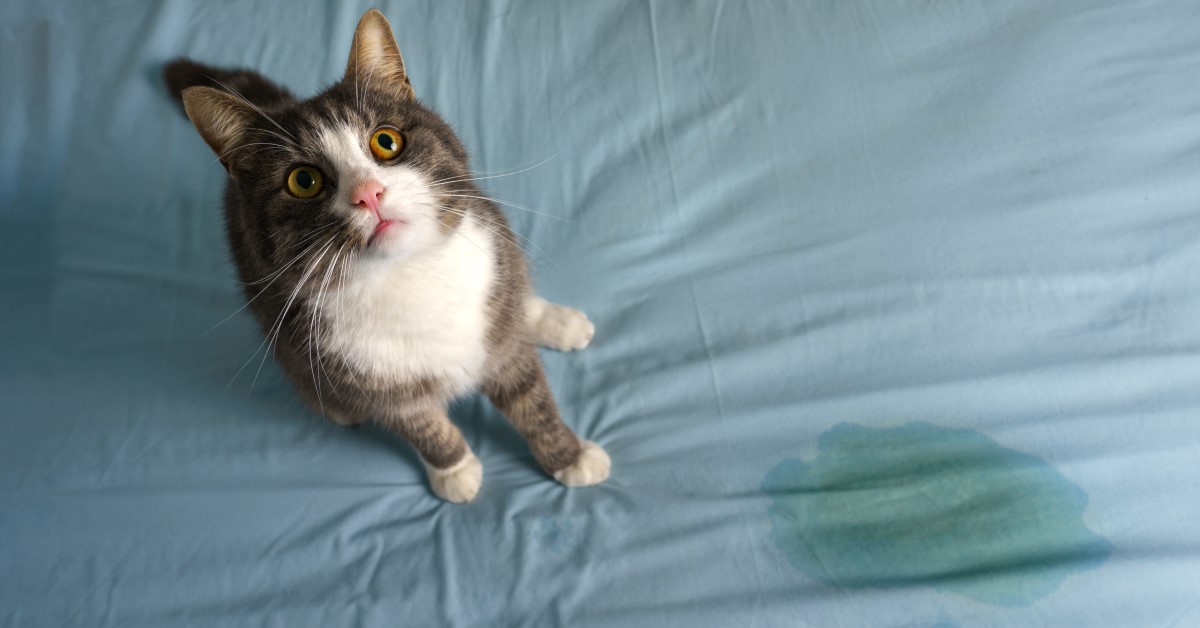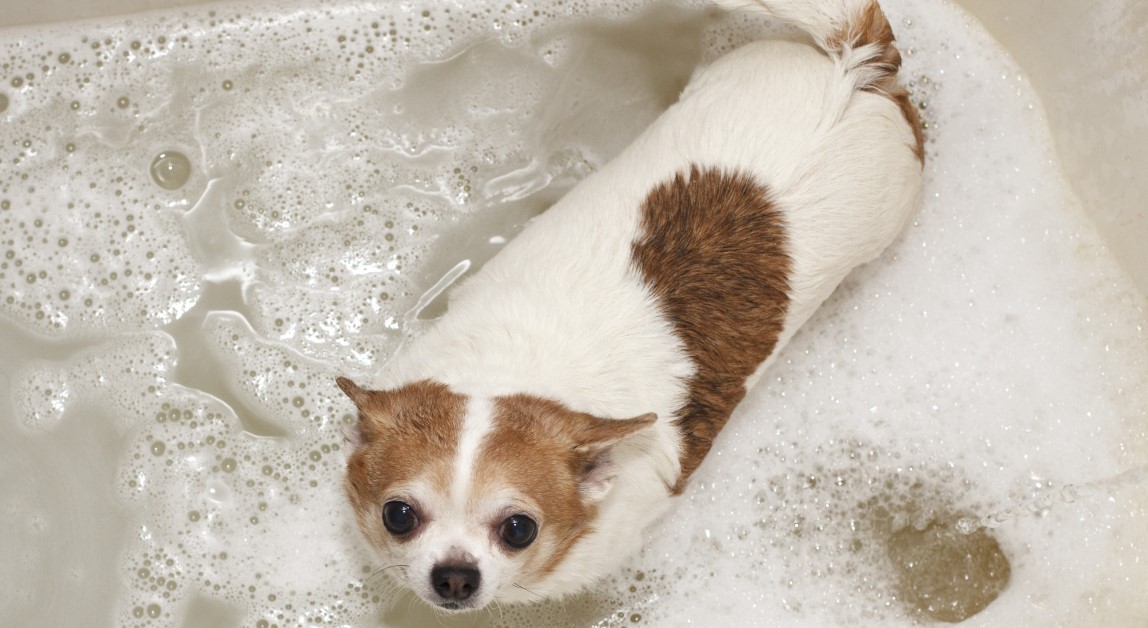Urine Marking in Cats: Why Do They Do It?
Urine marking in cats is often a behavioral problem that requires pet owners to identify the underlying cause.

It’s not uncommon for cats to urinate outside of their litter box on occasion. In fact, up to 10 percent of cats will urinate somewhere other than their litter box at some point in their lives, according to the ASPCA. When this behavior becomes more frequent, it may be due to urine marking.
Urine marking is an instinctive behavior in cats in which the animal urinates in the house to identify its territory. Cats are territorial animals by nature and use marking as a way to let other animals and people know that a certain area is their territory. Despite common misconception, urine marking in cats is not a house soiling problem but rather a behavior problem that requires a unique approach.
How to Identify Urine Marking in Cats
It is not always clear whether a cat is urine marking or has another problem, such as an aversion to their litter box. Cats that urine mark may also continue to use their litter boxes, meaning you can’t rule out urine marking simply because your cat is continuing to also use the litter box. There are several characteristics that could indicate that your pet is urine marking in the home:
- Urine marks are deposited on vertical surfaces. Similar to male dogs that lift their leg to mark on a piece of furniture, cats often mark on vertical surfaces, a behavior known as ‘spraying.’ A cat will spray by standing with its body erect and its tail extended straight into the air as it sprays urine onto a vertical surface, such as a wall or the side of a sofa.
- The urine has a pungent odor. What makes urine marking particularly noticeable is the smell associated with this behavior. Urine emitted during marking tends to be very pungent as it contains additional communication chemicals designed to ward off other animals. To humans, these chemicals can smell especially foul.
- Urine mark deposits are small in volume. Unlike when a cat urinates normally in a litter box, the urine emitted during marking is usually a small volume. If you notice that the amount of urine being deposited on furniture and other items is minimal, it could be urine marking.
Why Do Cats Mark with Urine?
Cats spray or mark for a variety of reasons. It could be due to an underlying health condition that causes the cat to urinate outside of the litter box. In some cases, the cause is behavioral or environmental. Here is a look at some of the most common reasons why cats mark with urine.
- Mark their Territory
The most common reason that cats mark with urine is to claim their territory. Urine marking is more common among intact males but can occur in cats of all ages and genders.
- Reduce Stress
Another common reason why cats mark is to reduce stress. By spreading the scent of their urine around the home, cats can reduce their stress levels. Marking is more common during the spring season as this is when stray cats often go into heat, prompting indoor cats to get stressed and perform territorial urine marking.
- Establish Dominance
Urine marking is often done as a form of conflict among cats. In multi-cat households, spraying is sometimes a way for a cat to settle disputes, determine pecking order, and draw boundaries.
- Deal with Change
Not all cats handle change in the same way. For many cats, stressors like moving to a new house, getting a new pet, or losing a favorite human can make the animal feel insecure. Sometimes, something as simple as getting a new piece of furniture can stress out a cat. Urine marking is one way that cats deal with new changes.
- Male Mating
While both male and female cats spray, unneutered males are more likely to engage in urine spraying as a way to show the opposite sex that they are available for mating. This can also occur in cats that were neutered later in life as the behavior can become a habit over time.
How Can Urine Marking Be Stopped?
Urine marking can be a tough habit to break but it can be done with persistence. Resolving your cat’s spraying problem requires time and patience. Here are some tips to help stop urine marking in your home:
- Thoroughly clean soiled areas. Avoid the use of strong-smelling cleaning supplies to prevent your cat from “over-marking” in the cleaned spot.
- Block off items that they are likely to mark. If your cat has a place where it likes to mark, such as the side of a sofa, block off this area to discourage this behavior.
- Restrict your cat’s access to windows and doors. Cats are more likely to mark when they can see other cats right outside the home.
- Ask your vet about anti-anxiety drugs. Certain medications may help your cat better manage stress and anxiety, reducing their likelihood of marking indoors.
- Get your cat spayed or neutered. If your cat is not already fixed, consider getting it spayed or neutered to reduce territorial spraying.
When to Speak to Your Vet
Urine marking in cats can be a frustrating experience, especially when the behavior continues long after you have implemented changes to stop the marking. If your pet continues to mark in the home, it may be time to contact your vet. Your veterinarian will determine if there are any underlying health conditions causing the behavior and offer solutions to reduce these occurrences.
Ready to start saving money on pet wellness care?
Then take a look at Mint Wellness, the pet wellness plan that provides fast reimbursement on routine pet care. Save on vaccinations, wellness exams, preventatives, dental, and more!
Learn More


